When it comes to minimalist home design for families, finding the right balance between functionality and style can be a challenge. However, minimalism has emerged as a popular design philosophy that seamlessly integrates both aspects. With its clean lines, clutter-free spaces, and focus on simplicity, minimalist home design offers a practical and stylish solution for families.
Minimalism is not about sacrificing comfort or livability; it’s about creating a space that promotes an uncluttered and serene environment. By eliminating excess and embracing essential elements, minimalist design allows families to enjoy a more organized and peaceful home.
In this article, we will explore the key elements of minimalist home design for families and its benefits. We will delve into the importance of functionality and organization in minimalist décor and discover how minimalist design can create a timeless appeal. Moreover, we will discuss the incorporation of natural elements and warm minimalism in creating a calm and clean space. Lastly, we will provide practical tips and design considerations to help families achieve a minimalist home design for families that suits their lifestyle.
Now, let’s dive into the world of minimalist home design for families and uncover the secrets to striking the perfect balance between functionality and style.
Key Elements of Minimalist Home Design for Families
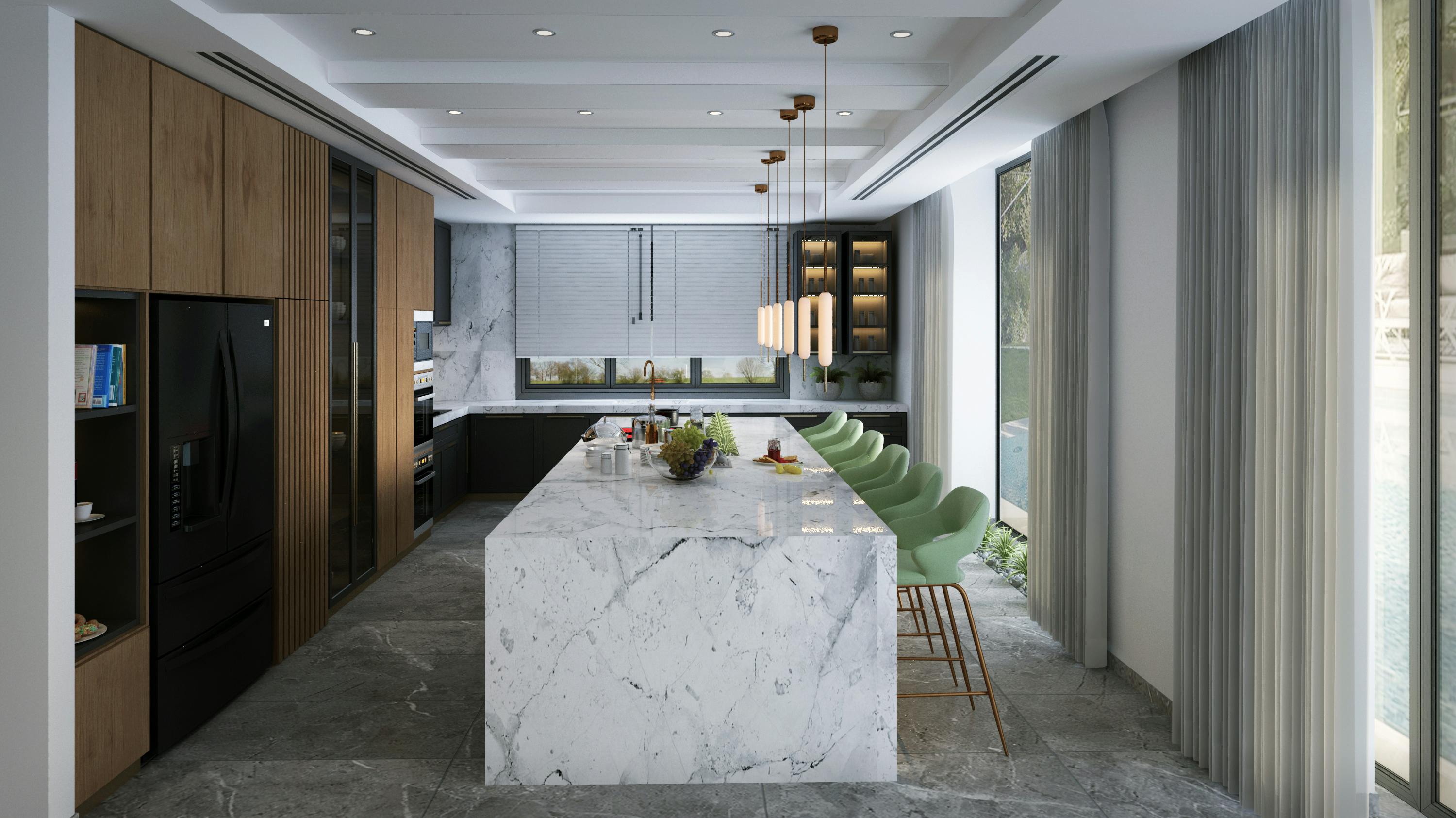
Minimalist home design has gained popularity in recent years for its clean and uncluttered aesthetic. With a focus on simplicity and functionality, this design style creates serene and spacious living spaces. If you’re considering incorporating minimalist elements into your home, here are four key elements to keep in mind:
Clean Lines and Simple Shapes
One of the defining characteristics of minimalist design is its emphasis on clean lines and simple shapes. This means avoiding ornate and intricate details and instead opting for sleek and streamlined forms. Think straight lines, geometric shapes, and minimal embellishments. By embracing simplicity, minimalist design can create a sense of harmony and calmness in your home.
Neutral Colors
Neutral colors play a vital role in minimalist home design. Shades like white, beige, and gray are commonly used to create a serene and timeless atmosphere. These colors have a calming effect and serve as the perfect backdrop for showcasing furniture and décor. By using a neutral color palette, minimalist homes can feel light, airy, and uncluttered.
Natural Light
Incorporating natural light is essential in minimalist design. Large windows, skylights, and glass doors are popular features to bring in ample sunlight. Natural light not only adds a warm and inviting ambiance but also helps to visually expand the space. By opening up your home to natural light, you can enhance the minimalist aesthetic and create a brighter, more spacious environment.
Well-built Furnishings
In minimalist design, the focus is not just on aesthetics but also on functionality. Well-built furnishings are key to achieving a minimalist look. Choose furniture pieces that are sleek, simple, and free from excessive ornamentation. Quality craftsmanship and materials are essential to ensure durability and longevity. By investing in well-built furnishings, you can create a timeless and clutter-free living space.
Remember, minimalist home design is all about simplicity and creating a sense of tranquility in your home. By incorporating clean lines, neutral colors, natural light, and well-built furnishings, you can achieve a minimalist aesthetic that is both visually appealing and functional. So, embrace the beauty of minimalism and create a space that brings peace and serenity to your everyday life.
Functionality and Organization in Minimalist Decor
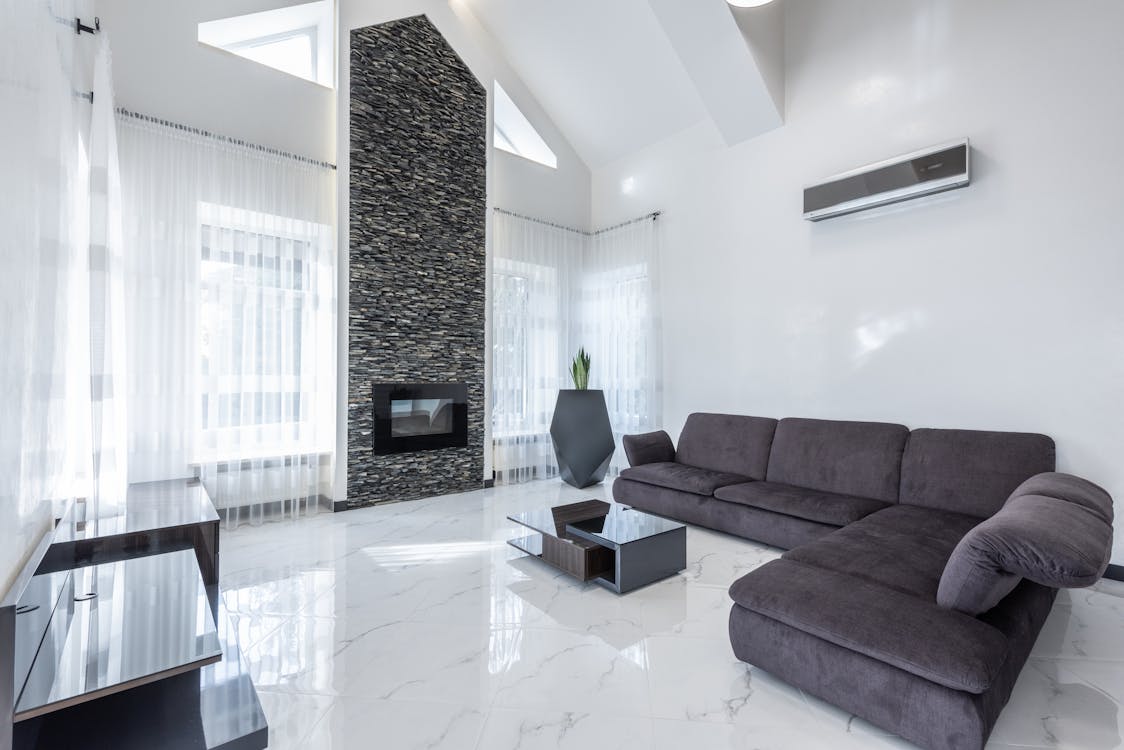
Minimalist decor is more than just a design trend – it’s a lifestyle choice that prioritizes functionality and organization. Inspired by the less-is-more philosophy, minimalist decor focuses on creating a space that is both visually appealing and highly functional. By embracing a clutter-free environment, a minimalist home promotes a sense of calm and tranquility. Let’s dive into the key aspects of functionality and organization in minimalist decor.
Purposeful Design
At the core of minimalist decor lies purposeful design. Every element in a minimalist space serves a specific purpose, contributing to the overall functionality of the room. From furniture to accessories, each item is carefully selected and thoughtfully placed to ensure it enhances the usability of the space. In a minimalist home, you won’t find unnecessary embellishments or decorative pieces without a clear function. This deliberate approach to design creates a clean and streamlined aesthetic, allowing the room to serve its intended purpose efficiently.
Emphasis on Organization and Decluttering
One of the defining characteristics of minimalist decor is its focus on organization and decluttering. A minimalist home is meticulously organized, with items neatly arranged and easily accessible. By removing excess belongings and keeping only what is essential, the space feels open and uncluttered. This emphasis on organization not only promotes a sense of calm but also makes it easier to maintain a clean and tidy environment. Minimalist decor encourages individuals to carefully curate their belongings, ensuring that each item has a designated place and purpose.
Monochromatic Color Scheme
In addition to functionality and organization, minimalist decor is characterized by a monochromatic color scheme. By sticking to a limited palette of neutral tones such as whites, grays, and earthy hues, a minimalist home exudes a sense of harmony and simplicity. This cohesive color scheme allows the focus to remain on the design elements and the overall aesthetic of the space. The absence of bold colors or busy patterns contributes to the calm and uncluttered ambiance that defines minimalist decor.
Pared-down Furniture
When it comes to furniture, minimalist decor embraces a less-is-more approach. Pared-down furniture with clean lines and simple silhouettes takes center stage in a minimalist space. Functionality is key when selecting furniture pieces, with an emphasis on practicality and comfort. By opting for sleek and streamlined designs, a minimalist home avoids unnecessary clutter and allows the furniture to blend seamlessly into the overall aesthetic. The aim is to create a space that is both visually appealing and highly functional, without compromising on comfort.
In conclusion, functionality and organization are central to minimalist decor. By incorporating purposeful design, emphasizing organization and decluttering, adopting a monochromatic color scheme, and opting for pared-down furniture, a minimalist home achieves a harmonious balance between aesthetics and usability. This design approach not only creates an inviting and serene environment but also promotes a more intentional and mindful way of living. Embrace the minimalist lifestyle and enjoy the benefits of a space that is not only beautiful but also highly functional and organized.
Timeless Appeal of Minimalist Design
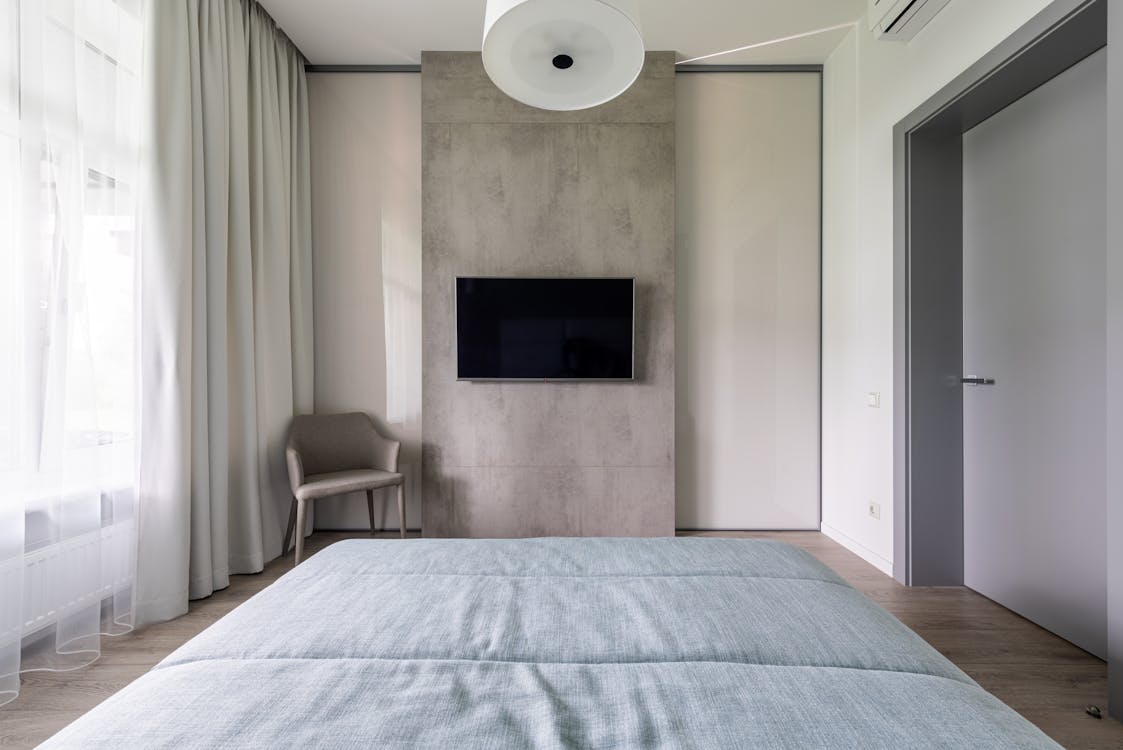
Minimalist design has a timeless appeal that continues to captivate homeowners and design enthusiasts alike. With its streamlined aesthetic, efficient floor plans, and emphasis on natural light, minimalist design offers a unique and compelling style that stands the test of time.
Streamlined and Elegant Aesthetic
One of the defining characteristics of minimalist design is its streamlined and elegant aesthetic. By focusing on simplicity and clean lines, minimalist homes create a sense of calm and harmony. The absence of clutter allows the design elements to shine, creating a visually pleasing and balanced space.
In minimalist design, less is more. Rather than relying on excessive ornamentation, minimalist spaces embrace a restrained approach to décor and furnishings. Simple and well-chosen pieces take center stage, allowing the beauty of each element to be appreciated on its own merit.
Efficient Floor Plans
Minimalist homes are known for their efficient floor plans and open spaces. Every square inch is carefully considered and utilized to maximize functionality. By eliminating unnecessary walls and corridors, minimalist design promotes a sense of openness and flow.
The efficient use of space in minimalist homes allows for better organization and decluttering. Each item has its designated place, reducing visual distractions and creating a calming environment. This focus on functionality makes minimalist design not only aesthetically pleasing but also highly practical for everyday living.
Ample Natural Light
Ample natural light is a key feature of minimalist design. Large windows, skylights, and glass walls are commonly used to bring the outdoors in and flood the space with natural light. This creates a bright and airy atmosphere that promotes a sense of well-being and positivity.
Natural light not only enhances the visual appeal of a minimalist home but also has numerous health benefits. It can improve mood, increase productivity, and create a sense of connection to the natural world. By harnessing the power of natural light, minimalist design creates spaces that are not only visually stunning but also conducive to a healthy and balanced lifestyle.
In conclusion, the timeless appeal of minimalist design lies in its streamlined aesthetic, efficient floor plans, and emphasis on natural light. Whether you’re drawn to the simplicity and elegance of minimalist design or the practicality and functionality it offers, there’s no denying its enduring allure. So if you’re looking to create a space that transcends passing trends and fads, consider embracing minimalist design and enjoy its timeless appeal for years to come.
Natural Elements and Warm Minimalism
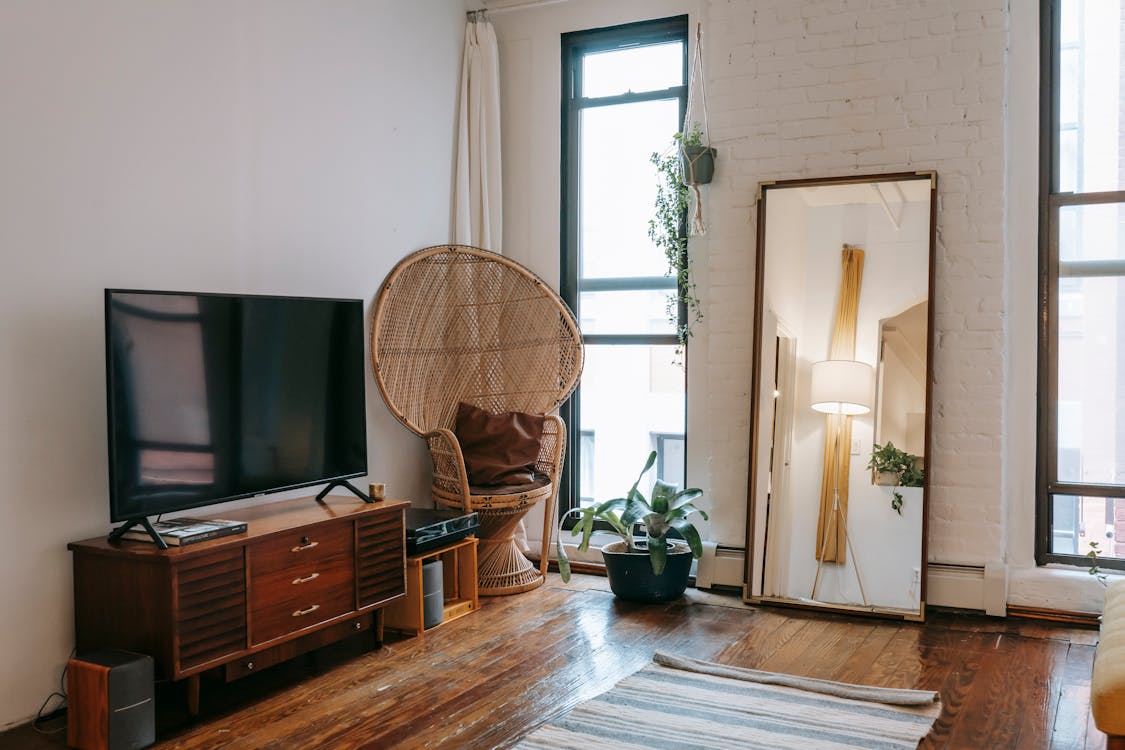
In the world of interior design, there’s a growing trend towards natural elements and warm minimalism. This design style combines the simplicity and functionality of minimalism with the beauty and warmth of natural materials and colors. The result is a space that feels inviting, tranquil, and connected to nature.
Use of Natural Materials
One of the key features of warm minimalism is the use of natural materials. From wood and stone to bamboo and rattan, these materials bring a sense of organic beauty and authenticity to a space. They add texture, depth, and a touch of rustic charm that can transform a room from stark and cold to warm and welcoming.
By incorporating natural materials into furniture, flooring, and decor, you can create a harmonious and balanced aesthetic. Imagine a dining table made from reclaimed wood, or a cozy armchair upholstered in natural linen. These elements not only elevate the overall design but also establish a connection to the natural world.
Earthy Colors
When it comes to color palettes, warm minimalism embraces earthy tones. Think of soft shades inspired by nature, such as warm browns, creamy whites, muted greens, and gentle greys. These colors create a serene and grounding atmosphere, evoking a sense of tranquility and relaxation.
By using earthy colors as the foundation of your design scheme, you can create a space that feels cozy and inviting. Consider painting your walls in a warm taupe or opting for a grey sofa paired with cushions in soft beige and sage green. These subtle, natural hues reflect light beautifully and create a harmonious backdrop for the rest of your decor.
Incorporating Plants
Adding houseplants is another essential aspect of warm minimalism. Not only do they bring a touch of nature indoors, but they also contribute to a healthier and more vibrant living environment. Plants purify the air, increase humidity, and provide a sense of calm and serenity.
When it comes to incorporating plants into a warm minimalist space, less is more. Choose a few high-quality plants that resonate with your personal aesthetic and fit the scale of the room. Consider placing them in stylish pots or hanging them in macrame planters to add visual interest and texture.
Remember to consider the care requirements of each plant and ensure that they receive adequate sunlight and watering. With proper maintenance, your plants will thrive and become an integral part of the overall design scheme.
To sum it up, warm minimalism embraces natural materials, earthy colors, and the incorporation of plants. By introducing these elements into your interior design, you can create a space that feels serene, connected to nature, and inviting. So why not bring the beauty of the natural world into your home and embrace the warm minimalism trend?
Creating a Calm and Clean Space
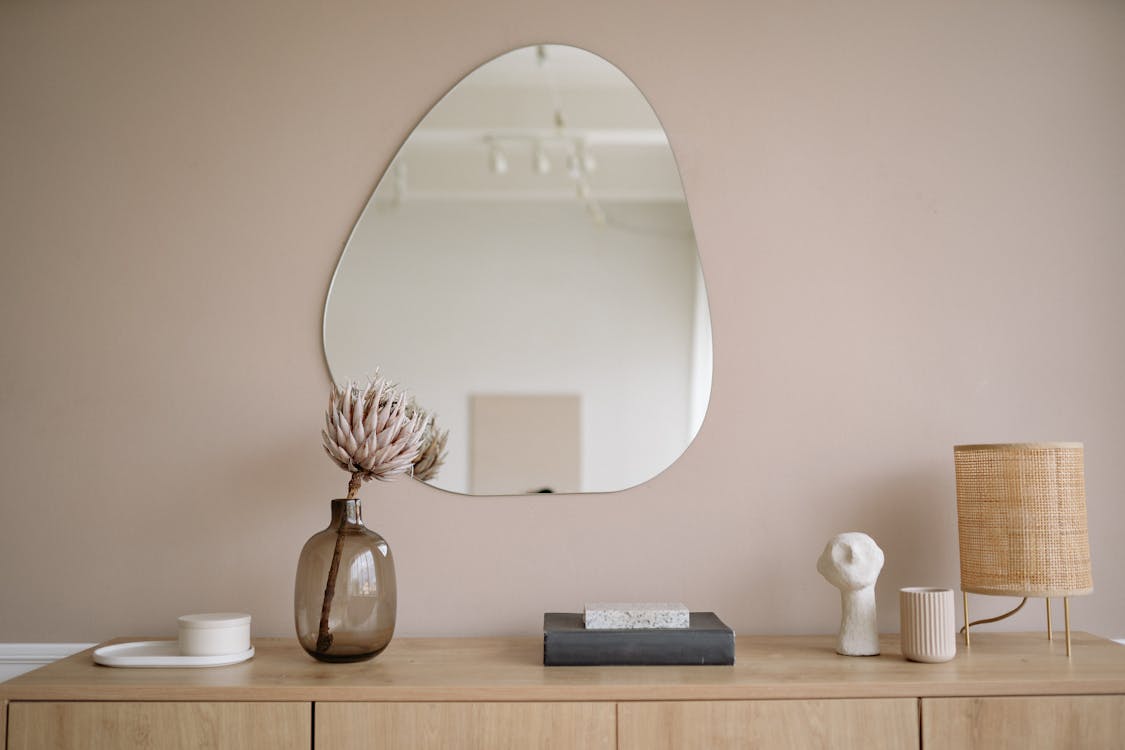
In today’s hectic and fast-paced world, finding a sense of calm and tranquility in our homes has become more important than ever. Creating a calm and clean space can help us relax, unwind, and truly enjoy our surroundings. In this section, we will explore three key aspects of achieving a calming environment: decluttering and organizing, involving children in minimalism, and exercising restraint in design choices.
Decluttering and Organizing
A clutter-free environment is the foundation of a calm and clean space. When our surroundings are filled with excess belongings and unnecessary clutter, it can be challenging to find peace and focus. Here are some tips to help you declutter and organize your home:
- Start small: Begin with one area or room at a time to avoid feeling overwhelmed. This could be a closet, a kitchen cabinet, or even a desk.
- Sort and categorize: Separate your belongings into categories such as keep, donate, or discard. Be honest with yourself about what you truly need and what items are just taking up space.
- Find storage solutions: Invest in storage bins, boxes, or shelving units to help you organize your belongings. Utilize vertical space to maximize storage potential.
- Regular maintenance: Make decluttering and organizing a regular part of your routine. Set aside a few minutes each day or dedicate a specific day each month to tidy up and ensure everything stays in its designated place.
By following these simple steps, you can create a clutter-free environment that promotes a sense of calm and order in your home.
Involving Children in Minimalism
Teaching children the value of minimalism and the importance of tidying and organizing from a young age can have lasting benefits. Here are some ways to involve children in embracing minimalism:
- Lead by example: Be a role model for your children by practicing minimalism yourself. Let them see how keeping a clean and organized space can lead to less stress and more enjoyment.
- Make it fun: Turn decluttering and organizing into a game. Challenge your children to find a certain number of items they no longer need or create a reward system for keeping their belongings tidy.
- Foster a sense of responsibility: Encourage children to take ownership of their belongings and teach them the importance of taking care of what they have. Help them establish a routine for cleaning up after themselves.
- Donate and give back: Involve your children in the process of donating gently used clothing, toys, or books to those in need. This instills a sense of empathy and gratitude in them.
By involving children in the minimalist lifestyle, you not only create a calm and clean environment, but you also teach them important life skills that will benefit them in the long run.
Restraint in Design Choices
When it comes to creating a calm and clean space, design choices play a crucial role. Here are some tips to exercise restraint in your design choices:
- Simplify your color palette: Use neutral colors, such as whites, grays, and beiges, to create a serene and timeless look. Limit bold or bright colors to small accents for a more calming effect.
- Embrace minimalism in furniture: Choose furniture pieces with simple lines and clean designs. Avoid overcrowding the space with too many pieces; instead, opt for a few well-curated items.
- Keep surfaces clear: Cluttered surfaces can disrupt the visual flow and create a sense of chaos. Keep countertops, tables, and shelves free from unnecessary items to maintain a clean and calm atmosphere.
- Let light in: Natural light has a soothing effect on our minds. Maximize natural light by choosing sheer curtains or blinds that allow sunlight to filter into the space.
By exercising restraint in your design choices, you create a visually pleasing and harmonious environment that promotes a sense of calmness and tranquility.
Remember, creating a calm and clean space is a journey that requires time and effort. Embrace the process of decluttering, involve your children in minimalism, and exercise restraint in design choices to truly transform your home into a sanctuary of peace and serenity.
Practical Tips for Minimalist Living

Multipurpose Furniture: Maximizing Functionality and Space
When it comes to living a minimalist lifestyle, one of the key principles is to embrace simplicity and minimize clutter. And what better way to do that than by incorporating multipurpose furniture into your living space?
Multipurpose furniture serves a dual purpose, allowing you to make the most out of limited space while still fulfilling your needs. From storage ottomans that double as seating to folding tables that can be tucked away when not in use, these clever pieces of furniture are a game-changer for anyone looking to optimize their living area.
Here are some practical tips to make the most of multipurpose furniture:
- Choose pieces with hidden storage: Look for furniture that has built-in storage compartments, such as bed frames with drawers or coffee tables with hidden compartments. This way, you can keep your belongings organized and out of sight.
- Invest in modular furniture: Modular furniture is customizable and can adapt to your changing needs. Whether it’s a sofa that can be rearranged into different configurations or a shelving system that can be expanded or contracted, modular furniture gives you the flexibility to create functional spaces.
- Opt for convertible furniture: Convertible furniture is the epitome of versatility. From sofa beds that turn into guest sleeping areas to dining tables that double as work desks, these pieces are perfect for maximizing space and functionality.
By incorporating multipurpose furniture into your home, you can declutter and create a more organized and efficient living space. Plus, it allows you to have the functionality you need without sacrificing style.
Promoting Relaxation and Tranquility: Creating Open Spaces
Another aspect of minimalist living is promoting relaxation and tranquility within your home. This can be achieved by creating open spaces that are free from clutter and unnecessary distractions. Here are some tips to help you create a serene and peaceful environment:
- Clear out the excess: Start by decluttering and getting rid of items that you no longer need or use. This will not only free up space but also create a sense of calmness and order.
- Embrace natural light: Maximize the use of natural light by keeping your windows clear of obstructions. Natural light has a soothing effect and can make your space feel open and airy.
- Choose a neutral color scheme: Opt for a neutral color palette for your walls and furniture. Shades like white, beige, or light gray can create a calming and harmonious atmosphere.
- Minimize visual distractions: Keep your decor simple and minimal. Avoid excessive patterns or busy artwork that can overwhelm the space.
By implementing these strategies, you can create a home environment that promotes relaxation and tranquility, allowing you to unwind and recharge after a long day.
Educating Kids on Minimalism: Leading by Example
Teaching your kids about minimalism and the benefits of decluttering can be a valuable life lesson that will serve them well into adulthood. Here are some ways you can introduce your children to minimalism:
- Lead by example: Show your kids the benefits of a minimalist lifestyle by practicing what you preach. Involve them in decluttering activities and explain the reasons behind minimalism, such as the importance of valuing experiences over material possessions.
- Encourage conscious consumption: Teach your children the importance of mindful spending and the impact of consumerism on the environment. Encourage them to think critically before making purchases and prioritize quality and utility over quantity.
- Emphasize experiences: Foster a mindset that values experiences over material possessions. Encourage your children to participate in activities that bring joy and fulfillment rather than accumulate unnecessary belongings.
By educating your kids on minimalism and decluttering, you are equipping them with essential life skills that will promote mindfulness and intentionality in their future endeavors. Lead by example and inspire them to live a more intentional and purposeful life.
Remember, living a minimalist lifestyle is not about sacrificing comfort or style. It’s about making conscious choices that align with your values and priorities. By incorporating multipurpose furniture, creating open spaces for relaxation, and educating your kids on the benefits of minimalism, you can create a home that embraces simplicity and fosters a sense of peace and well-being.
Design Consideration for a Minimalist Home

When it comes to design consideration for a minimalist home there are a few key considerations that can make a significant difference in creating a space that feels clean, organized, and serene. By focusing on good lighting and air circulation, letting go of unnecessary possessions, and embracing an open space plan, you can create a minimalist home that exudes simplicity and tranquility.
Good Lighting and Air Circulation
One of the cornerstones of a design consideration for a minimalist home is having ample natural light and good air circulation. This not only enhances the visual appeal of the space but also contributes to a healthier and more comfortable living environment. Here are a few tips to consider:
- Maximize natural light: Option for large windows, skylights, and light-colored curtains or blinds to allow as much daylight as possible into the rooms. Natural light helps create an airy and spacious atmosphere while reducing the need for artificial lighting.
- Choose the right artificial lighting: When natural light is not sufficient, choose lighting fixtures that align with the minimalist aesthetic. Option for sleek, simple designs that blend seamlessly with the overall design of the space. Consider using LED lights for energy efficiency.
- Ensure proper ventilation: Adequate air circulation is essential for maintaining a comfortable living environment. Install ceiling fans or opt for HVAC systems with proper air filtration to ensure a continuous flow of fresh air.
By prioritizing good lighting and air circulation, you can create a minimalist home that feels bright, refreshing, and inviting.
Letting Go of Unnecessary Possessions

A key principle of minimalist living is letting go of unnecessary possessions. By decluttering and streamlining your belongings, you can create a more organized and peaceful living space. Here’s how you can approach this:
- Assess your belongings: Take a mindful approach to evaluate your possessions and determine what truly adds value to your life. Consider each item’s functionality and emotional attachment. Let go of anything that no longer serves a purpose or brings you joy.
- Practice intentional consumption: Adopt a more intentional mindset when it comes to acquiring new items. Be mindful of your purchases and focus on quality over quantity. This will help prevent unnecessary clutter from accumulating in your home.
- Organize and store thoughtfully: Invest in smart storage solutions that allow you to keep your belongings organized and easily accessible. Opt for minimalistic storage options, such as built-in cabinets or hidden storage compartments, to maintain a clean and uncluttered look.
By embracing a minimalist lifestyle and letting go of unnecessary possessions, you can create a home that is free from clutter and promotes a sense of calm and tranquility.
Open Space Plan
An open space plan is a hallmark of minimalist home design. It creates a sense of spaciousness, flow, and simplicity. Here are some considerations when incorporating an open space plan into your minimalist home:
- Remove unnecessary walls: Open up your living areas by removing non-load-bearing walls that separate rooms. This allows for seamless flow and maximizes the sense of space.
- Opt for minimal and multifunctional furniture: Choose furniture pieces that are minimalist in design and serve multiple purposes. This helps to avoid overcrowding the space and allows for more flexibility in arranging the layout.
- Paint walls in neutral tones: By painting your walls in neutral tones, such as white or light gray, you create a blank canvas that enhances the minimalist aesthetic. Neutral colors promote a sense of calm and provide a clean backdrop for other elements in the room.
Incorporating an open space plan into your minimalist home design can create a sense of openness, simplicity, and freedom of movement.
To summarize, by focusing on good lighting and air circulation, letting go of unnecessary possessions, and embracing an open space plan, you can design a minimalist home that reflects simplicity, tranquility, and a sense of personal style. Whether you’re starting from scratch or transforming an existing space, these design considerations will help you create a home that promotes a minimalist lifestyle and a clear mindset.
Creating an Open and Clean Atmosphere

When it comes to minimalist home design, creating an open and clean atmosphere is a key objective. This design approach aims to eliminate clutter and create a sense of spaciousness, which can have a significant impact on the overall ambiance of a home. By incorporating simple decor and emphasizing a sense of openness and cleanliness, you can achieve a visually appealing and tranquil living space.
Here are some essential considerations to keep in mind when striving to create an open and clean atmosphere in your minimalist home:
Simple Decor:
- Opt for minimal and clean-lined decor items that contribute to a sleek and uncluttered aesthetic.
- Choose decorative pieces with simple shapes and minimal ornamentation to maintain a streamlined look.
- Avoid overcrowding surfaces with too many accessories, and instead, focus on a few carefully chosen pieces that have meaning and purpose.
Sense of Openness and Cleanliness:
- Maximize natural light by keeping windows unobstructed and using sheer or light-filtering window coverings.
- Remove unnecessary barriers or partitions to create an open flow between different areas of your home.
- Use mirrors strategically to reflect light and create the illusion of larger and more open spaces.
- Keep the floors clean and clear of unnecessary furniture or objects, allowing for a sense of spaciousness.
Remember, the goal is to create an environment that feels calm, uncluttered, and visually appealing. By employing simple decor and emphasizing openness and cleanliness, you can achieve a minimalist design that promotes a serene atmosphere in your home.
Also Read : Creating a Minimalist Bathroom : Tips for Homeowners in 2023
Frequently Asked Questions
- What is minimalist home design for families?
Minimalist home design is a style that focuses on simplicity, clean lines, and uncluttered spaces. It involves reducing the number of decorative elements and using neutral colors to create a calm and organized living environment. - Is minimalist home design suitable for families?
Yes, minimalist home design can be suitable for families. It promotes a clutter-free and organized living space, which can reduce stress and create a calm environment for the whole family. However, it’s important to consider the specific needs and preferences of each family member when implementing this style. - How can minimalist design be functional for a family home?
Minimalist design can be functional for a family home by maximizing storage space, using multi-purpose furniture, and creating designated areas for different activities. It encourages organization and simplifies daily routines, making it easier for families to maintain a clean and tidy living space. - How can I add a personal touch to a minimalist home design for families?
While minimalist design focuses on simplicity, it doesn’t mean you can’t add a personal touch. You can incorporate meaningful artwork, family photographs, or unique decorative items that align with your personal style and values. Just remember to maintain a clutter-free overall appearance. - Are there any challenges with minimalist home design for families?
Yes, there can be challenges with minimalist home design for families. It requires maintaining organization and tidiness, especially with children’s belongings. It may also require different storage solutions to accommodate various items. Communication and establishing rules about cleanliness and organization can help overcome these challenges.

